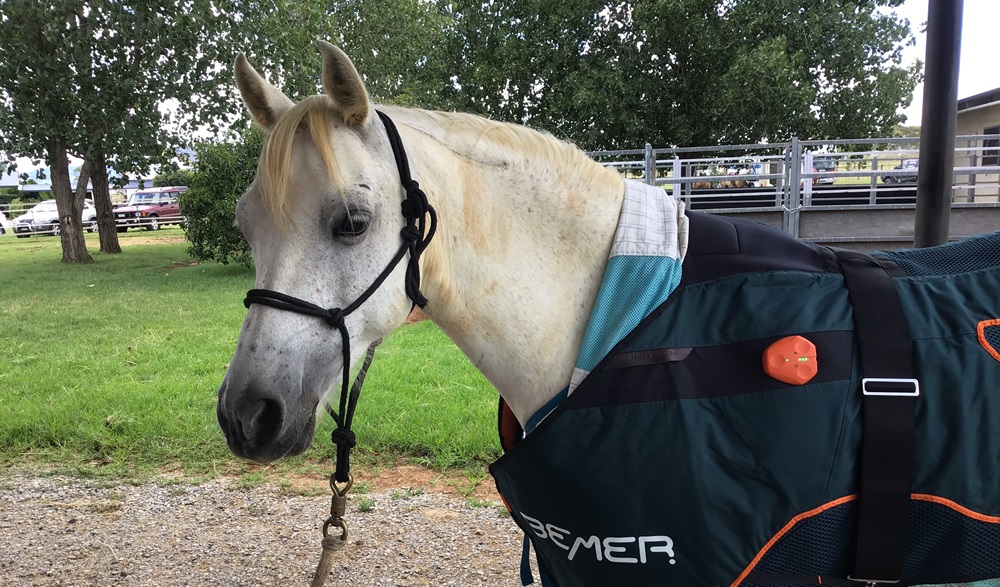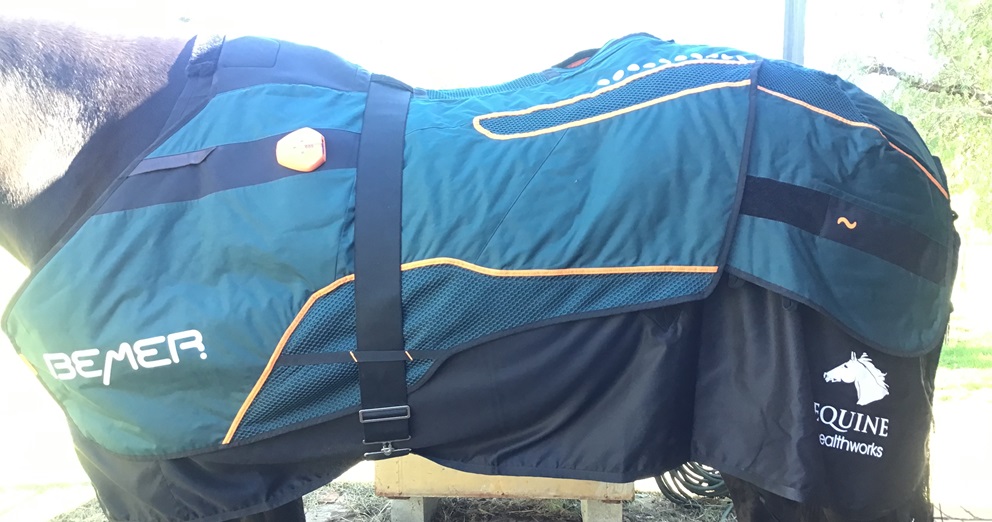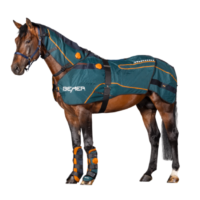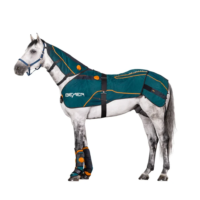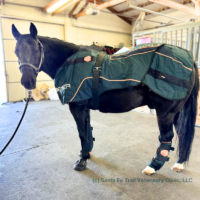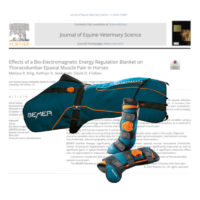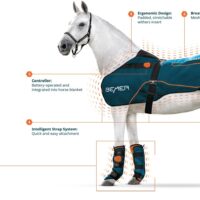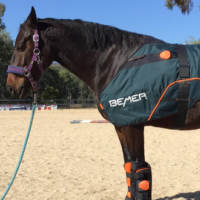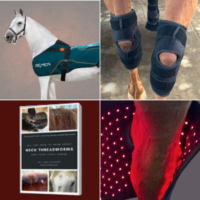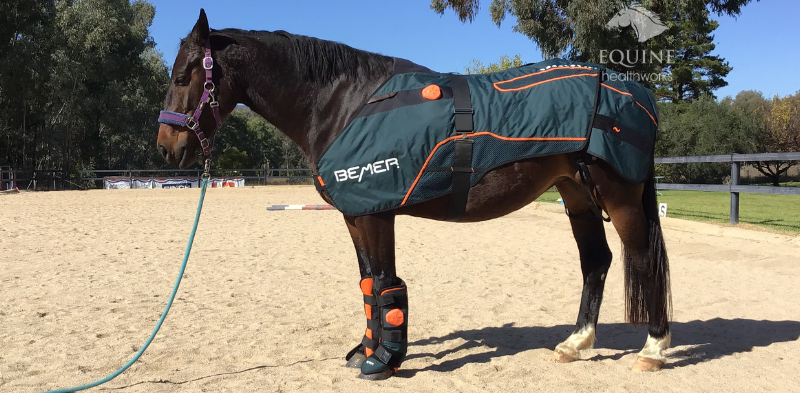
As a bodyworker, I’ve been using hands-on therapies to help horses for nearly 20 years. Only recently, I came across BEMER and decided to add this blanket and leg wraps to my practice, Equine Healthworks.
So how did I come across BEMER, what have I found, and – as a PhD-level critical thinker – what do I make of it?
Here, I explain how and why it fits into my holistic practice. I start with some observable effects in horses, then unpack these as to what might be happening, and finally explain where it sits in my view of how we work with horses.
Note: The following reflects my personal experience and views, and as such are anecdotal in nature. Always consult a veterinarian if you have concerns about your horse’s health. I am a BEMER UK partner presently in Australia and receive no compensation for this piece of writing.
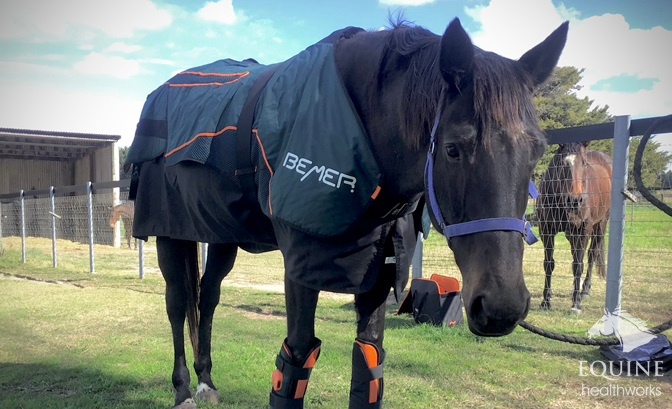
How I was introduced to BEMER
As a rule, I don’t jump onto bandwagons, especially where the-next-great-device is concerned.
I’m the marketer’s nightmare, being a seriously slow uptaker of new technologies. And that’s why I had my heels dug in very firmly when a UK friend first started telling me about BEMER.
But then, after a few years (I’m not kidding), I started to do some reading. I found scientific papers and anecdotal information that were variously good, bad, or on the fence. Much of the good science related to the ‘human’ BEMER forerunner of the equine version.
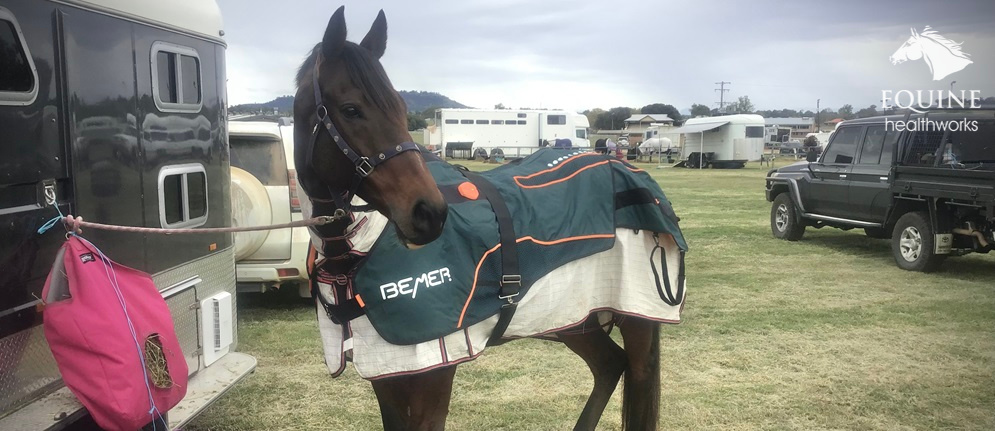
It was only when a very qualified European colleague offered to hand deliver my own BEMER and, what’s more, give a presentation to my clients AND stay with me and talk BEMER all weekend, that I finally took the plunge.
Since then, I’ve been near-obsessing over how this therapy device is producing such remarkable results in the horses I work with.
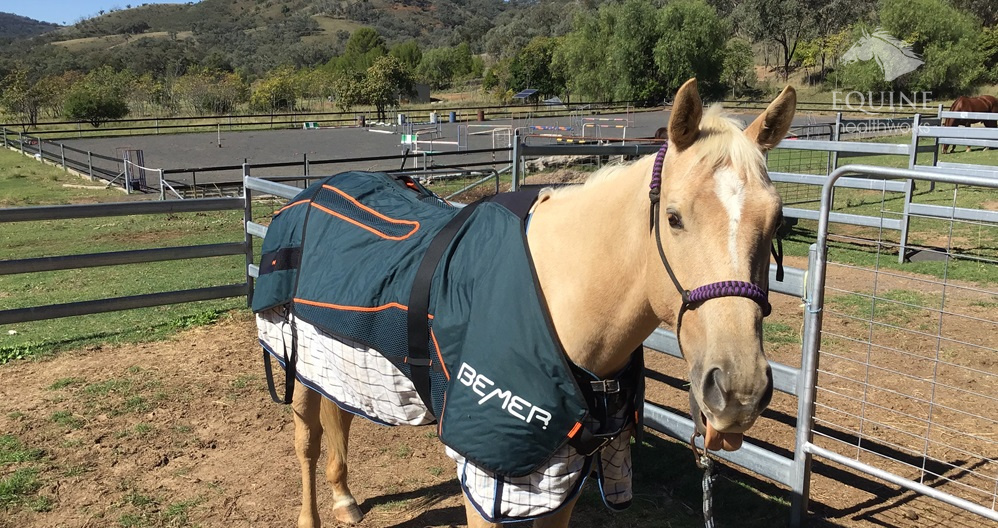
My initial observations
What surprised me immediately was the similarity of physiological effects arising from the BEMER and those arising from my bodywork.
- Many horses show a response that suggests parasympathetic nervous system activation. There is visible dilation of blood vessels, particularly around the upper limbs. The pulse is visibly raised along the jugular groove. Horses ‘zone out’, with head lowered, eyes shut, and lips drooping. Then there are all the big sighs with licking and chewing… and the gut rumbles (peristalsis).
- Additionally, sweat patches can appear, and muscle twitches (fasciculation) occur randomly.
- Some horses don’t respond during the first session, but do so later, once they’re able to mentally ‘let go’. I work on a second horse and look back to find that the first horse is now zoning and yawning, with the blood vessels raised.
- And yes, the parasympathic state appears to be just a heartbeat away for the rest of the day and night.
In short, what I saw happening was what I’d been watching for nearly two decades of bodywork practice.
I’m a therapist/healer, yet this technology was producing crossover results – how?
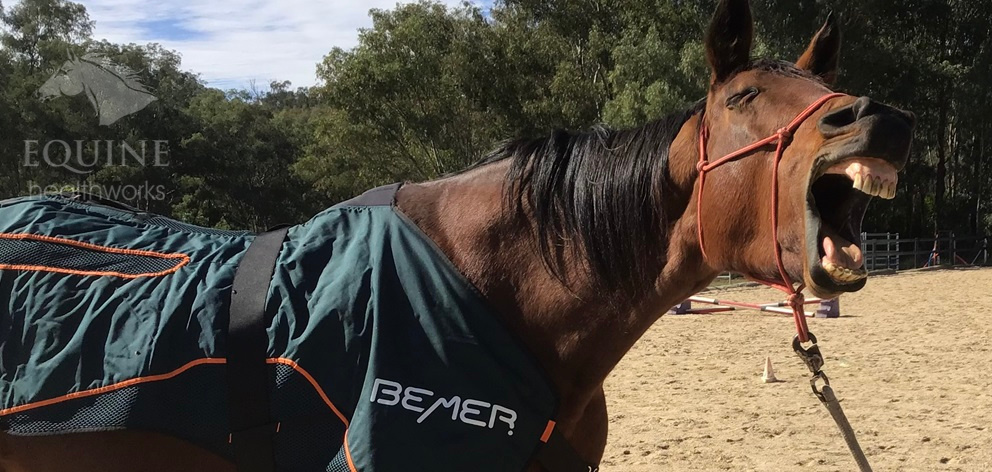
What else have I seen happening?
Using the BEMER with equine clients gives me chance to stand back and watch, before assessing progress over multiple sessions.
- Musculoskeletal
The horse’s muscles are softer when I start to work, vertebral joints free up more easily, and the ‘hard’ tension is often absent from the thoracolumbar fascia.
Horses will focus on a problem area as the effect is felt. They turn and look at it, or reach down to nuzzle a knee or foot. I see this as blood flow increasing in a restricted area, causing some form of prickling or tickling (actually, I’ve had personal experience of this with the human BEMER device).
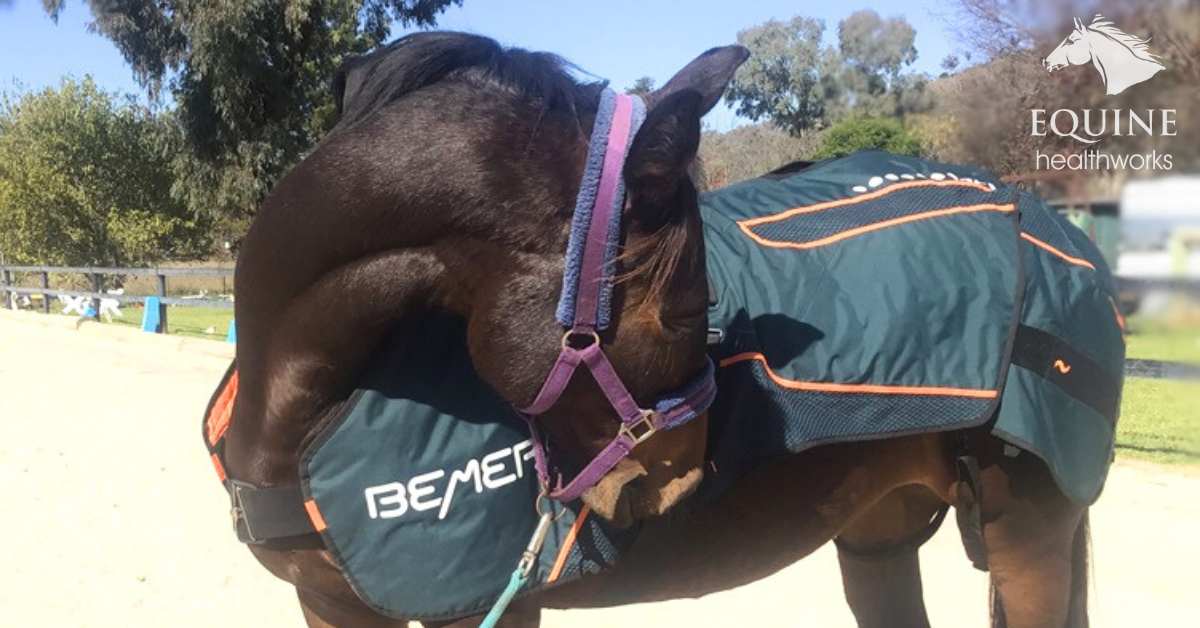
Certain areas of the body may sweat and these often correspond to known problem areas. I put this down to ‘ischemia’, the inward rush of blood to an area where supply has been compromised through injury or lack of use.
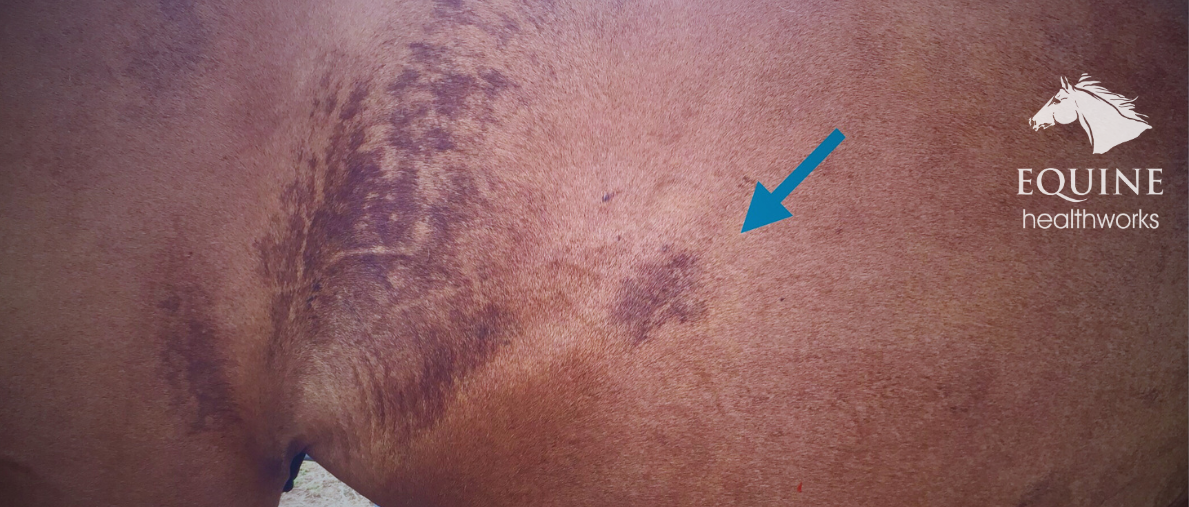
- Posture
Horses with bad hoof imbalances will shift around a lot. Again, I’m thinking about sensations felt when blood supply improves – and the hooves are certainly subject to a degree of blood perfusion that can be restricted or impaired. (And I hope that current hoof balance allows its restoration…)
This also happens with lumbar spinal and pelvic region issues – the horse shifts weight between the hinds as sensations increase.
Horses shift their weight and square up. I’m certain that there’s also an afferent effect from the signal – proprioceptive awareness increases or is restored.

- Injury
Bruising doesn’t happen when we might expect it to, for example, post-surgery. I’ve seen this absence (if that makes sense) in a pink-skinned horse – in that instance, the vet expressed surprise at lack of post-surgery bruising and swelling, without knowing BEMER had been used.
Swelling reduces rapidly or even fails to develop at all, as fluid (oedema) is swiftly moved.
- Circulation
While it’s normal for veins and arteries to become raised under the skin during bodywork, this is even more intense as many tiny vessels also become dilated.
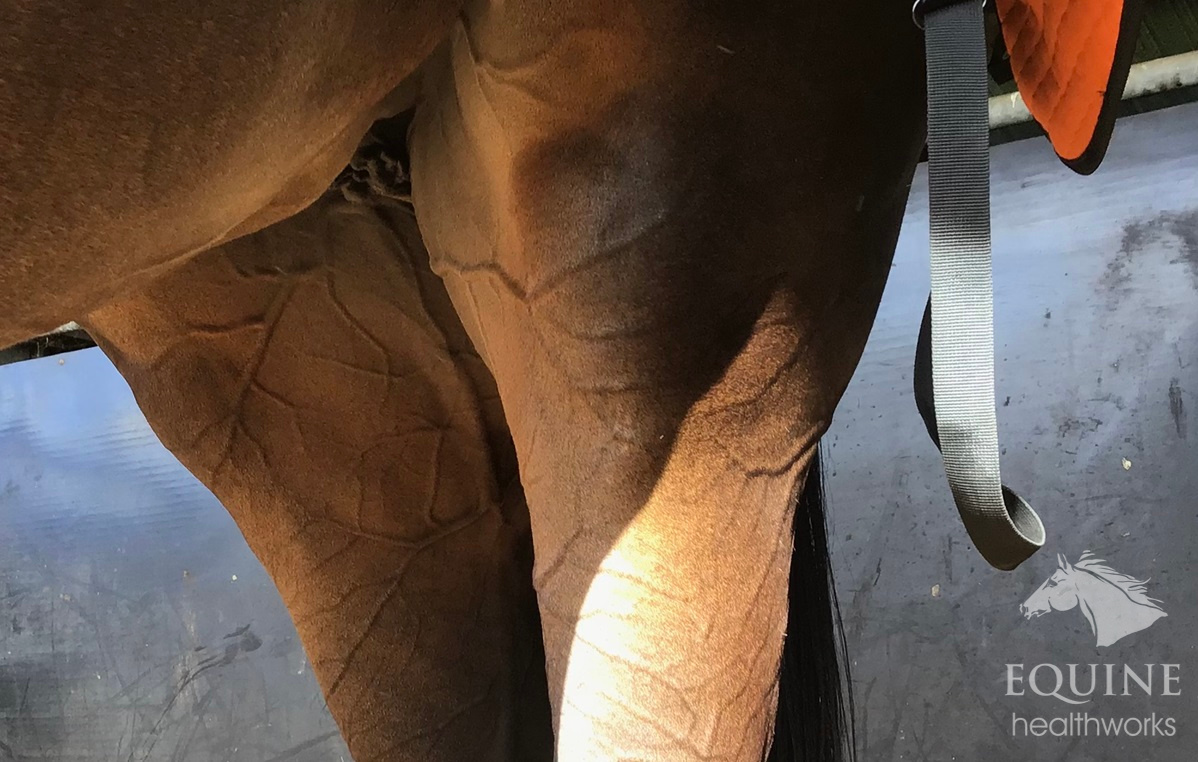
In horses where an immune response is already visible, in the form of overdeveloped lymph nodes, hives, etc., signs can disappear overnight.
Dull horses become bright in the eye again. Horses with either no known or supposedly resolved veterinary issues, suddenly improve after a session or two. Health has been restored to an internal problem that we may have known nothing about and probably never will.
- Temperament
Very anxious horses can respond with parasympathetic activation almost instantly, within the first 1-2 minutes. It is as if their exhausted nervous system is on a knife edge, ready to shift states. These horses appear to be have extreme sensitivity to the blanket, as befits this problem.
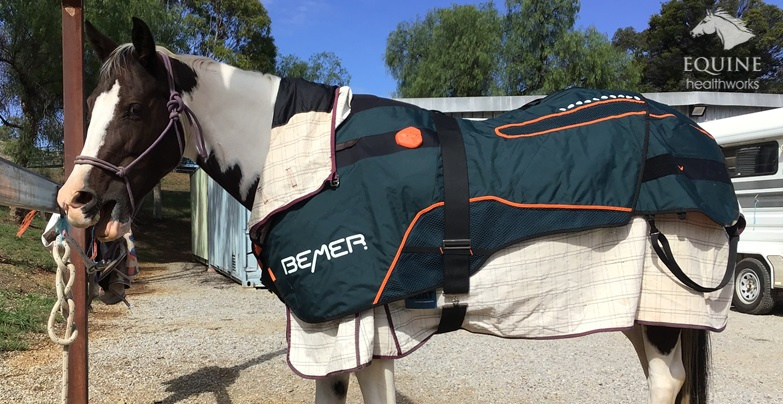
Not strictly bodywork-related but certainly client-horse-related: Performance horses can become more relaxed at events, and therefore more focused in classes. Quality of rest during their overnight stays appears to be improved.
I’ve also seen how separation anxiety at events can be drastically reduced through use of the blanket.
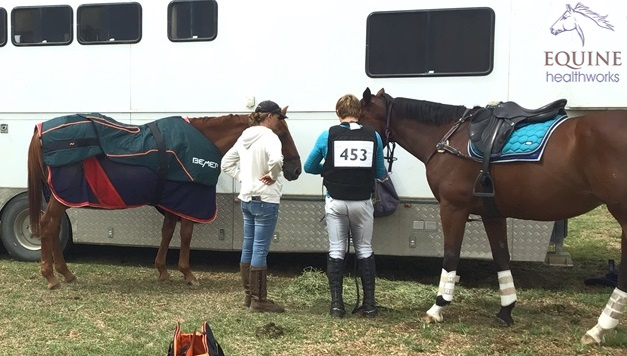
Unpacking these effects
Our appreciation of BEMER’s benefits must rest in understanding HOW and WHY circulation is often compromised, even in small degrees that we’d never usually be aware of.
Because, whether you’re coming to bodywork from the Western or Chinese perspective, adequate blood supply is the touchstone of life.
Some of the physical effects described here can be explained by the (researched and evidenced) fact that BEMER targets microcirculation, moving blood to the areas it needs to reach and where it has been restricted.
Restoring circulation quite clearly doesn’t mean simply warming up muscles – although it does do that. Basically, all the tissues in the body that receive blood are being nourished, something that is essential to the healing process.
As improved bloodflow returns, the horses often focus on an area of their body. I assume they’re experiencing a prickling or ‘pins and needles’ effect (again, I have experienced this directly). They don’t appear to be worried, although they can be distracted. The returning bloodflow also appears to create heat and unusual areas of sweat.
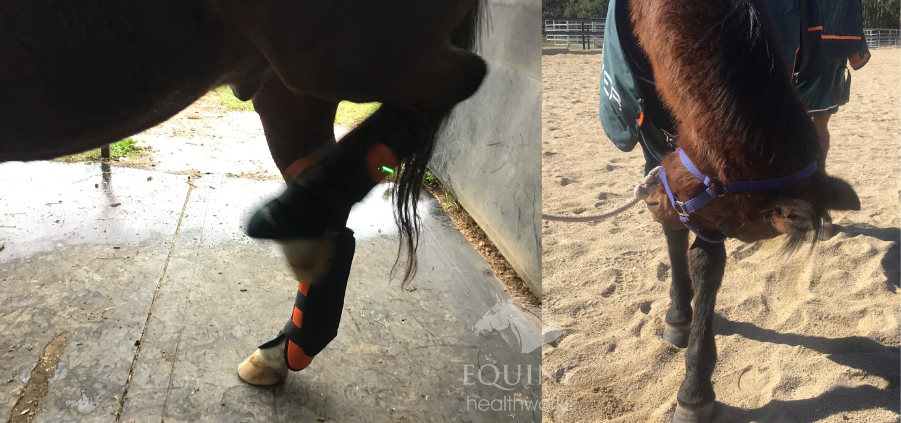
There’s a lymphatic effect too, as interstitial fluids leaked from capillaries are eased away from the tissue to start their journey via lymph vessels back to the heart. I assume the BEMER signal is stimulating this process, via the improved action higher up the circulatory network. Lymph vessels are also able to function more freely at ever level.
There simply has to be an improvement in nutritional uptake after illness. This is due to parasympathetic activation (‘rest and digest’), but another factor is starvation and lack of stimulation of digestive blood flow that’s associated with an low level of digestive processes (due to lack of food). Blood collects nutrition from the gut to deliver through the body. And if the blood circulation has been depleted and is then stimulated… we are looking at multi-level improvements, at point of collection, transport, and delivery.
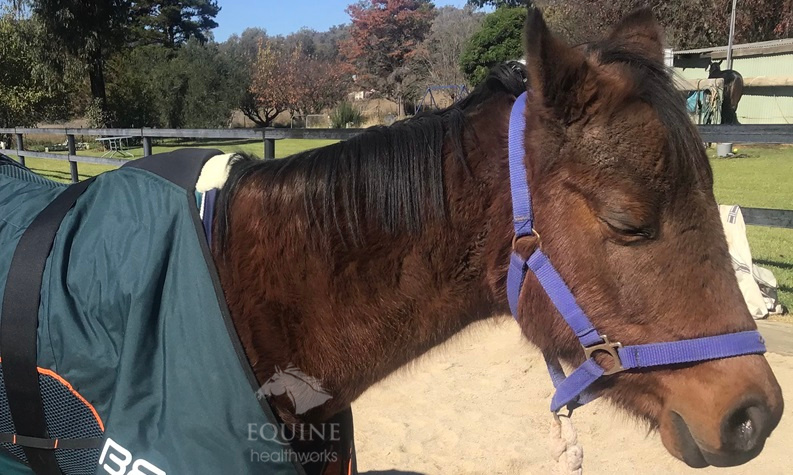
When less is more (or different)
This brings me to an important point. Again, it’s solely my personal viewpoint based on observations.
Many people using different modalities have different preferences and not all follow the same lines of thought, which is of course fine!
Yet some will always say that a device needs to run with greater intensity to reach ‘deep enough’ in the horse’s body.
To me, that’s like viewing the body as inert tissue that needs to be physically penetrated in some way.

Devices that have greater strength or intensity work, of course they do. But very often I find that the key difference is not in whether high-powered or low-powered devices are more effective, but in how quickly that effect happens.
Even then, that’s not a hard and fast rule, as horses are individuals and any holistic approach brings different results in different individuals at different speeds.
Talking to the Central Nervous System
Due to my own hands-on work, I’m very aware that there’s no need to go heavy when stimulating change in the body.
My view is that you don’t need a hammer to crack this particular nut. Quite the opposite, in fact.
BEMER’s electrical frequency is tiny, yes. So is its magnetic density. But there’s a number one reason for that: it’s emulating a specific neuronal signal in the body.
And not just any signal: one that’s essential to maintaining the optimal health of all its tissues (more here).
And seeing this as a weakness is to do a serious disservice to the equine peripheral and central nervous system.
Why? Because light contact creates afferent impulses can bring about change.
And what does that mean?
Stimulated by touch, afferent (sensory) signals carry information to the brain, where it is integrated and processed. The brain then coordinates a response via efferent (motor) signals back to the rest of the body (more explanation here).
It’s Also What Feels Right To Me
The way we adopt technology in our work is a choice.
I believe that many tech devices work, but in different ways. I obviously have preferences. I would never have deep tissue massage or high velocity chiropractic for my own body and have no desire to administer anything that impactful to a horse either.
I think we can do better than that now, given what we know.
That’s why, due to the way that BEMER works – gently harmonising with the body to guide its systems back towards homeostasis – this device sits very comfortably within my practice.
And at last, I can understand what my colleagues have been going on about for so many years.
Below: Fresh from the paddock, this driving pony received a full body session and then extra focus on his neck.
